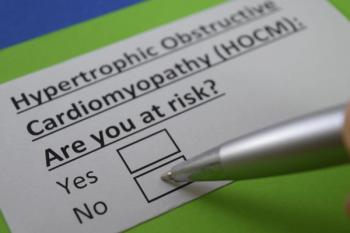
5 top ways to get paid for helping patients with med adherence
Reimbursement for MTM services is still a challenge for many. An insurance executive offers some well-vetted tips.
An insurance executive recently revealed top ways pharmacists can obtain reimbursement for helping their patients with medication adherence.
Alexandra LinDuring a recent Wolters Kluwer Clinical Drug Information webinar, Alexandra Tungol Lin, clinical manager of health outcomes and pharmacy care management for Blue Cross Blue Shield of Michigan, provided pharmacists with some new information. Here are her top tips:
1. Metrics. Participate in the Medicare Star Ratings program as well as the Quality Rating System (QRS) from the Centers for Medicare & Medicaid (CMS), which informs consumers about the quality of healthcare services in healthcare plans purchased on the Marketplace.
“Pay-for-performance programs for pharmacy can really move the needle,” Lin said. “Currently, there are no payments tied to QRS. But many of us anticipate that payments will be tied to QRS,” Lin said.
2. Pay for performance. When possible, take part in health plans’ pay-for-performance programs. Although it is one of the few insurers offering such a program, an example from Blue Cross Blue Shield of Michigan and the University of Michigan is the Michigan Pharmacists Transforming Care and Quality (MPTCQ) program.
Starting with 10 participating physician organizations across the state, clinical pharmacists review patients’ medication plans, collaborate with physicians to make necessary medication changes, and work with patients to help them understand how to safely and properly use the medications.
3. In the community. Host health fairs in the community, giving individuals knowledge about their conditions.
“Especially with the Marketplace population, it is probably the first time for many patients to have insurance. Terms like ‘formulary’ are very foreign to them,” Lin said.
4. Empathy. Express empathy, using statements such as “Your doctor and I can work together to help you,” Lin said. Patients might then become less defensive and admit that they are splitting their statin tablets, for example.
“Patients might be experiencing muscle aches that they associate with statins. We should really use our medication expertise and address whether there should be an alternative statin, whether a dose increase is necessary, whether there is a vitamin D deficiency causing the muscle ache, or if exercise is causing the pain,” Lin said.
5. Outreach. Call patients to find out the barriers to medication adherence they are experiencing.
Newsletter
Pharmacy practice is always changing. Stay ahead of the curve with the Drug Topics newsletter and get the latest drug information, industry trends, and patient care tips.











































































































































































































